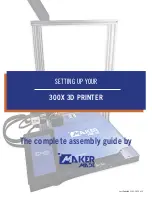
USING THE PC UI
Guide command conventions
When command instructions are given in this guide, the
following conventions apply:
•
Capital letters represent command keywords, the required
part of the command.
•
Lowercase letters, appearing in italics, represent data that
changes each time you use the command. For example, the
number of copies and the name of a form can vary for each
job.
•
Characters enclosed in square brackets ([ ]) are optional.
You key them in only when you need them. For example,
when you see [copies] in a command and you do not key in
a specific number, the system automatically prints one copy.
•
Characters enclosed in curly braces ({ }) are required.
•
Options are separated by a vertical line (
).
Terminal emulation mode (TEM)
In certain instances (for example, when performing the Problem
task), the PC UI display mimics a system controller terminal's
screen for the duration of the task. This display mode is referred
to as TEM. Once the task is finished, the desktop again appears
on the screen unless you are operating in the XPSM environment
and have used the TEM command to select remote terminal
operation.
Tasks performed in TEM mode are listed in the appropriate Menu
window with ”(TEM)” following the task name.
For example, when you select the ”Problem . . . (TEM)” option
from the System Control menu window, the PC UI is
automatically put in TEM mode so that you can perform the
Problem task.
After finishing a task in TEM mode, you must wait for object
mode to display before beginning another task in TEM mode.
Failure to do so causes a system crash.
The TEM function also may be used with the optional XPSM
software. In this instance, the TEM command transfers control of
the 4635 from the PCUI to a remote terminal. Once control has
been transfered, the system will no longer respond to the PCUI
and control can only be transfered back by entering the
command @UI$ at the remote terminal or rebooting the 4635.
XEROX 4635 LASER PRINTING SYSTEM OPERATOR GUIDE
2-21
















































